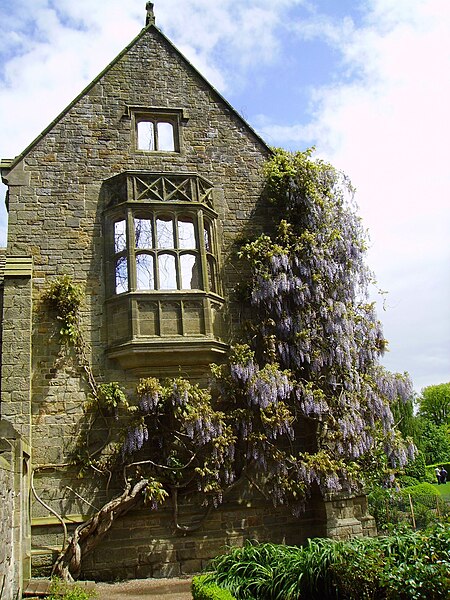Wistariahurst is a historic house museum and the former estate of the Skinner family, located at 238 Cabot Street in Holyoke, Massachusetts. It was built in 1868 for William Skinner, the owner of a successful silk spinning and textile business, and is named for the abundant wisteria vines which cascade across its eastern facade. Originally constructed in Williamsburg in 1868, the mansion designed by Northampton architect William Ferro Pratt was moved to Holyoke in 1874, following the devastating flood which swept away the original Skinner mills. Following the death of Belle Skinner, its music room was operated as a private museum from 1930 to 1959, housing the Belle Skinner Collection of Old Musical Instruments, before their donation by the family to Yale University. Since 1959 it has been operated as the Wistariahurst Museum, and is open to the public. The property was listed on the National Register of Historic Places in 1973.
Wistariahurst
Wistariahurst
Mayor William Taupier presenting Mary E. Preiss a certificate of commendation for her work in getting Wistariahurst on the National Register of Historic Places, 1973
The estate and gardens of Wistariahurst, with the carriage house visible at the left
Wisteria is a genus of flowering plants in the legume family, Fabaceae (Leguminosae). The genus includes four species of woody twining vines that are native to China, Japan, Korea, Vietnam, southern Canada, the Eastern United States, and north of Iran. They were later introduced to France, Germany and various other countries in Europe. Some species are popular ornamental plants. The genus name is also used as the English name, and may then be spelt 'wistaria'. In some countries in Western and Central Europe, Wisteria is also known by a variant spelling of the genus in which species were formerly placed, Glycine. Examples include the French glycines, the German Glyzinie, and the Polish glicynia.
Wisteria
Seeds and seedpods of Wisteria floribunda (Japanese wisteria). The seeds of all Wisteria species contain high levels of the wisterin toxin and are especially poisonous.
W. floribunda at Ashikaga Flower Park (ja) in Ashikaga, Tochigi, Japan. The largest wisteria in Japan, it is dated to c. 1870 and covered approximately 1,990 square metres (21,400 sq ft) as of May 2008[update].
Wisteria at Nymans Gardens (West Sussex, England)








